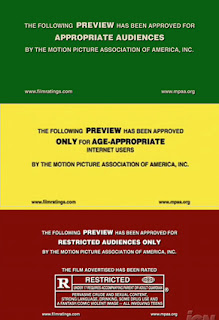I also spent the day at the Picture Production Company (PPC) which cuts and edits trailers and creates graphics and typography.
Before a trailer is made a Promo is edited.
- a video is a 3-8 minute outline of the whole film's narrative
- used to pitch the film.
- then condensed for a trailer according to a short brief written by the client.
- a video is a 3-8 minute outline of the whole film's narrative
- used to pitch the film.
- then condensed for a trailer according to a short brief written by the client.
Mostly editors have a lot of creative input and they select the clips either from ‘dailies’ (daily film reels whilst filming is still in progress), which is why things may appear in trailers and not in the final cut, or from a finished feature film, but this is uncommon.
I was told that the clients usually want to push their best bits into their trailer which is why trailers often end up showing too much. However, sometimes clients specify moments or narrative or characters which they wish to conceal. By reducing what can be shown the client and editor aim to tease the audience with enigmas.
The UK and Europe often have very different trailers to the US because they are more trusting in the intelligence of the audiences in the European markets. An example of this is ‘The Eagle’ trailer, which was released in both the US and the UK but whilst in production it was the US who wanted more text for narrative explanation.
When asked the editor I spoke with at PPC said that music was the most important component of a trailer.
He thought that bad trailer gimmicks were:
- overly quick cutting,
- not a lot of shots shown or narrative content and
- using lots of fades to black throughout the trailer.
He thought that bad trailer gimmicks were:
- overly quick cutting,
- not a lot of shots shown or narrative content and
- using lots of fades to black throughout the trailer.
All trailers, once refined, are checked by the certificating company who give input and ask for some things such as violence, swearing and smoking to be cut.
America have recently rethought the general green label for trailers, to show that they have been approved by the ‘Motion Picture Association’ and have introduced a red, possibly to be followed by a yellow, label to indicate that an internet trailer is “approved only for age-appropriate Internet users”. This is a way of identifying content that may be offensive such as violence, sex, language or trailer intensity.



No comments:
Post a Comment